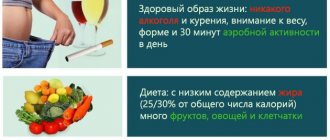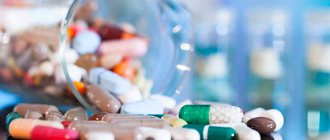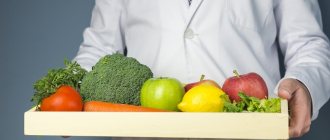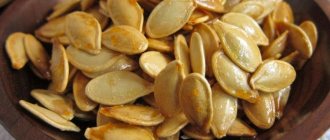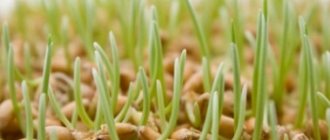Indications for use
Indications for prescribing the diet are diseases of the cardiovascular system, in particular atherosclerosis with damage to the vessels of the heart, brain or other organs, coronary heart disease caused by atherosclerosis and hypertension due to atherosclerosis. Heart disease requires a special attitude in everything - comprehensive attention to your health, quality treatment, lifestyle changes and proper nutrition. Treatment table number 10 is a nutrition system specially designed for heart patients, the purpose of which is to improve blood circulation, help the cardiovascular system, facilitate the functioning of the liver and kidneys, normalize metabolism and establish a gentle mode of operation for the digestive organs.
What's prohibited?
Article on the topic
Heart failure: causes, symptoms and emergency care
People with cardiovascular diseases or a tendency to them should completely avoid :
- products made from butter and puff pastry, cream products and ice cream;
- fatty varieties of meat, poultry and fish, including canned and salted ones, and do not use them for making soups;
- fatty or salty dairy products;
- products that can excite the nervous system, that is, strong tea, coffee, cocoa and chocolate;
- peas and beans;
- some vegetables, such as radishes, radishes, sorrel, spinach and mushrooms;
- marinades, meat, fish and mushroom sauces, pepper, mustard and caviar;
- alcoholic beverages and all carbonated drinks.
Reference
Atherosclerosis is a disease of blood vessels that lose flexibility as a result of harmful factors, become hard due to the deposition of fats on the walls and, as a result, narrow, which reduces blood access to organs. The disease leads to thrombosis and ischemic damage to organs. Atherosclerosis is considered one of the most dangerous diseases that leads to death.
Top 15 healthy foods for blood vessels and heart
Leafy green vegetables
Cabbage, kohlrabi, broccoli, arugula, lettuce, spinach, dill, parsley and other greens are full of minerals, vitamins, and antioxidants. Vitamin K normalizes blood clotting, protects blood vessels and improves the functions of the cells lining them. Consumption of leafy greens significantly reduces the risk of ischemia, which was confirmed by a study involving 29,689 women. [12]
Avocado
One fruit contains 975 mg of potassium, which is 28% of its daily value. To reduce blood pressure by 8.0/4.1 mmHg. and a 15% risk of stroke, it is enough to consume 4.7 g of potassium per day. Monounsaturated fats in avocados reduce cholesterol in overweight people and the likelihood of developing metabolic syndrome. [3, 4]
Soybeans
Soy protein, unlike animal protein, reduces bad cholesterol by an average of 3% and has many cardiovascular benefits. Soy isoflavones play an important role in this - they reduce total cholesterol by 3.9 mg/dl and “bad” LDL by 5 mg/dl. [5]
Whole grain products
Compared to refined grains, brown rice, oats, rye, barley, buckwheat and quinoa contain more fiber. An analysis of 45 studies found that eating three servings of whole grains daily reduced the risk of heart disease by 22%. [6, 7]
Fatty fish
Salmon, mackerel, sardines and tuna provide your daily dose of omega-3 without additives. To lower systolic blood pressure, it is enough to consume three servings of fatty fish per week. [8]
Berries
Eating blueberries daily improves the function of the cells lining blood vessels and helps control blood pressure and blood clotting. Eating strawberries, blackberries and raspberries was also associated with an 11% reduction in excess weight, LDL cholesterol and inflammatory markers. Antioxidants anthocyanins provide benefits, which protect the body from oxidative stress. [9, 10]
Oranges
A medium orange contains about 62 calories and 3 grams of fiber. Pectin fights cholesterol, and potassium helps control blood pressure and improves the health of blood vessels.
Sweet potato
Replace white potatoes with sweet yams, which have a lower glycemic index. Sweet potatoes do not cause a rapid spike in blood sugar, and they also contain fiber, vitamin A and lycopene. To enhance the taste, you can season it with cinnamon and lime juice. [eleven]
Walnuts
It is an excellent source of fiber and microelements such as magnesium, copper, manganese. Studies have shown that regularly eating walnuts reduces LDL levels by 16%, oxidative stress and inflammation. [12]
Dark chocolate
High-quality dark chocolate with at least 70% cocoa content is rich in flavonoids. Studies have confirmed that if you eat it five times a week, the risk of developing ischemia is reduced by 57%. Eating chocolate twice a week was associated with a 32% lower risk of developing calcified plaque in the arteries. [13, 14]
Beans
Beans contain starch, which is not broken down by pancreatic enzymes - it is processed by bacteria in the large intestine. Resistant starch improves heart health by lowering triglyceride and LDL levels. Its action is complemented by folic acid, antioxidants, and magnesium. [15, 16]
Tomatoes
The vegetable contains the plant pigment lycopene with powerful antioxidant properties. It neutralizes harmful free radicals, preventing oxidative damage and inflammation - low levels of lycopene in the blood are associated with heart attacks and stroke. [17]
Seeds
Chia, flax, and hemp seeds are sources of heart-healthy nutrients, including fiber and omega-3 fatty acids. Adding them to the diet prevents heart disease, including inflammation, high cholesterol. [18]
Olive oil
Antioxidants and other substances in olive oil reduce inflammation and prevent heart problems. A study of 7,216 adults found that patients who consumed more of the healthy dressing had a 35% lower risk of developing heart disease. [19]
Garlic
The benefits of garlic are due to the presence of the compound allicin, which is known for various therapeutic effects. A six-month study shows that the effects of taking 600 to 1,500 mg of garlic extract daily are equivalent to taking a prescription blood pressure drug. [20, 21]
5 Steps to Protect Against Heart Disease
The ranking of the healthiest foods for the heart did not include foods that were less tested by scientists. But cardiologists and scientists have no doubt that you can also benefit from sweet red peppers, asparagus, acorn squash, cantaloupe, papaya, green tea, almonds, tofu, low-fat yogurt and carrots. This list of products is enough to create a delicious and healthy menu for the week - planning will help you follow the diet and track improvements.
When planning your menu, you should adhere to a few more rules:
- Control your portion size. How much you eat is just as important as what you eat.
- Eat more vegetables and fruits. Natural, whole foods are low in calories, high in fiber, and help reduce your intake of unhealthy snacks.
- Choose low-fat protein sources. Lean meats, poultry, fish, low-fat dairy products and eggs are some of the best sources of protein.
- Reduce the amount of salt in your food. Sodium increases blood pressure.
- Limit your intake of unhealthy fats. Avoiding trans fats is an important step to control your cholesterol levels.
Expert commentary
Tatyana Eliseeva, nutritionist, nutritionist
Changing eating habits can often be difficult, especially if you have years of unhealthy eating habits. As you step on the right path, remember that willpower is a muscle. The sooner you start training it, the higher your chances of a comfortable old age without serious heart disease.
Information sources
- Vitamin K: the effect on health beyond coagulation – an overview, https://www.ncbi.nlm.nih.gov/pmc/articles/PMC3321262/
- Fruit, vegetables, and olive oil and risk of coronary heart disease in Italian women: the EPICOR Study, https://pubmed.ncbi.nlm.nih.gov/21177799/
- The importance of potassium in managing hypertension, https://pubmed.ncbi.nlm.nih.gov/21403995/
- Effect of a moderate fat diet with and without avocados on lipoprotein particle number, size and subclasses in overweight and obese adults: a randomized, controlled trial, https://pubmed.ncbi.nlm.nih.gov/25567051/
- Soy isoflavones lower serum total and LDL cholesterol in humans: a meta-analysis of 11 randomized controlled trials, https://pubmed.ncbi.nlm.nih.gov/17413118/
- Effects of soluble dietary fiber on low-density lipoprotein cholesterol and coronary heart disease risk, https://pubmed.ncbi.nlm.nih.gov/18937894/
- Whole grain consumption and risk of cardiovascular disease, cancer, and all cause and cause specific mortality: systematic review and dose-response meta-analysis of prospective studies, https://www.ncbi.nlm.nih.gov/pmc/articles/ PMC4908315/
- Moderate consumption of fatty fish reduces diastolic blood pressure in overweight and obese European young adults during energy restriction, https://pubmed.ncbi.nlm.nih.gov/19487105/
- Effects of Berries Consumption on Cardiovascular Risk Factors: A Meta-analysis with Trial Sequential Analysis of Randomized Controlled Trials, https://www.ncbi.nlm.nih.gov/pmc/articles/PMC4804301/
- Strawberries decrease atherosclerotic markers in subjects with metabolic syndrome, https://pubmed.ncbi.nlm.nih.gov/20797478/
- Effect of consuming a purple-fleshed sweet potato beverage on health-related biomarkers and safety parameters in Caucasian subjects with elevated levels of blood pressure and liver function biomarkers: a 4-week, open-label, non-comparative trial, https:// www.ncbi.nlm.nih.gov/pmc/articles/PMC4965517/
- Effects of walnut consumption on blood lipids and other cardiovascular risk factors: a meta-analysis and systematic review1,2,3, https://www.ncbi.nlm.nih.gov/pmc/articles/PMC2696995/
- Chocolate consumption is inversely associated with prevalent coronary heart disease: the National Heart, Lung, and Blood Institute Family Heart Study, https://pubmed.ncbi.nlm.nih.gov/20858571/
- Chocolate consumption is inversely associated with calcified atherosclerotic plaque in the coronary arteries: the NHLBI Family Heart Study, https://pubmed.ncbi.nlm.nih.gov/20655129/
- Nutritional quality of legumes, and their role in cardiometabolic risk prevention: a review, https://pubmed.ncbi.nlm.nih.gov/23398387/
- Pinto bean consumption reduces biomarkers for heart disease risk, https://pubmed.ncbi.nlm.nih.gov/17634169/
- Lycopene and tomato and risk of cardiovascular diseases: A systematic review and meta-analysis of epidemiological evidence, https://pubmed.ncbi.nlm.nih.gov/28799780/
- Potent antihypertensive action of dietary flaxseed in hypertensive patients, https://pubmed.ncbi.nlm.nih.gov/24126178/
- Olive oil intake and risk of cardiovascular disease and mortality in the PREDIMED Study, https://pubmed.ncbi.nlm.nih.gov/24886626/
- Effect of garlic on serum lipids: an updated meta-analysis, https://pubmed.ncbi.nlm.nih.gov/23590705/
- Effects of Allium sativum (garlic) on systolic and diastolic blood pressure in patients with essential hypertension, https://pubmed.ncbi.nlm.nih.gov/24035939/
Material publication date – October 12, 2021
Attention! The information is for informational purposes only and is not intended to make a diagnosis or prescribe treatment. Always consult a specialized doctor!
Authors: Anna Shelestun, Tatyana Eliseeva Ask a question
Rating:
10
/10
Votes: 9
Usefulness of material 10
Reliability of information 10
Formatting of Article 10
What is possible
Article on the topic
Assess the risks.
How to get examined for hypertension The list of permitted foods is wide enough to meet the recommended caloric intake of the diet of 2300–2600 calories per day. The list of products allowed by therapeutic diet number 10 includes:
- Eggs in any form, but no more than one per day.
- Whole milk, but only if it does not cause flatulence, cream, lactic acid drinks, low-fat types of sour cream and cottage cheese.
- Cereals, pasta and legumes, which are recommended to be cooked in water and milk.
- Vegetables, for example, can be safely eaten boiled and baked: potatoes, beets, carrots, white cabbage and cauliflower; cucumbers, tomatoes, carrots, lettuce, green onions, dill, and parsley are allowed raw.
- Vegetarian soups with potatoes, vegetables, cereals, as well as milk and fruit soups.
- Sweets in the form of raw berries and fruits, as well as compotes, jelly, jellies, mousses, milk creams, jam, honey, non-chocolate candies, marshmallows, marshmallows.
- Weak tea, surrogate coffee, vegetable and fruit juices, rosehip decoction.
- Unsalted butter and vegetable oils for use in cooking.
Example of a daily menu for diet No. 10
Here's what your menu might look like if you follow diet No. 10:
- Breakfast (8 a.m.)
– cottage cheese with sour cream, semolina or rice porridge with water or milk, bread and butter, tea with milk. - Snack (10 am)
– a glass of kefir or yogurt, fruit. - Lunch (12 hours)
- pureed vegetable soup, steamed turkey meatballs, porridge, baked apple. - Afternoon snack (15:00)
– one-egg omelette, applesauce, rosehip drink. - Dinner (18:00)
– buckwheat or vegetable cutlet, cottage cheese pudding or potatoes with boiled fish and jelly.
